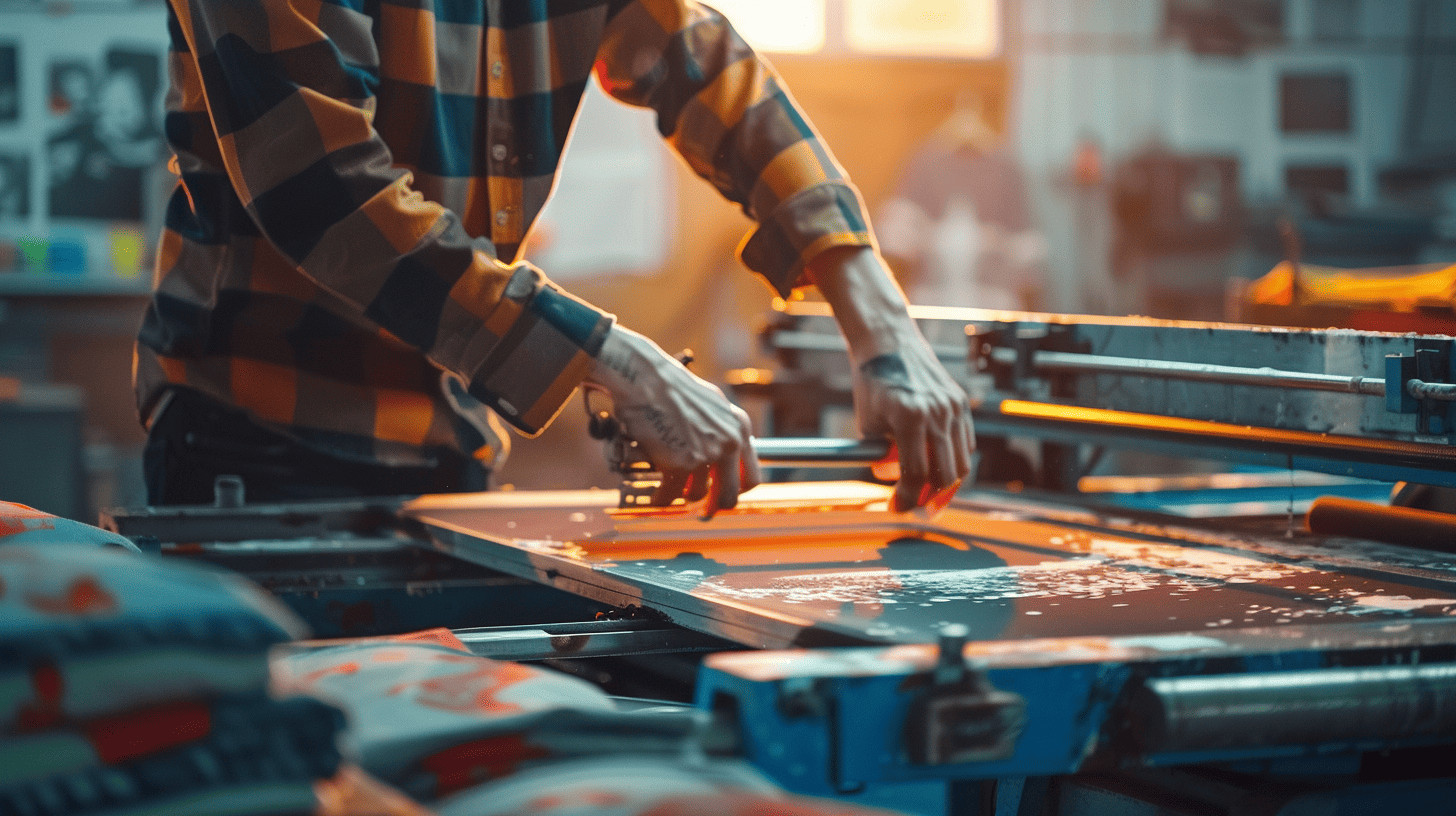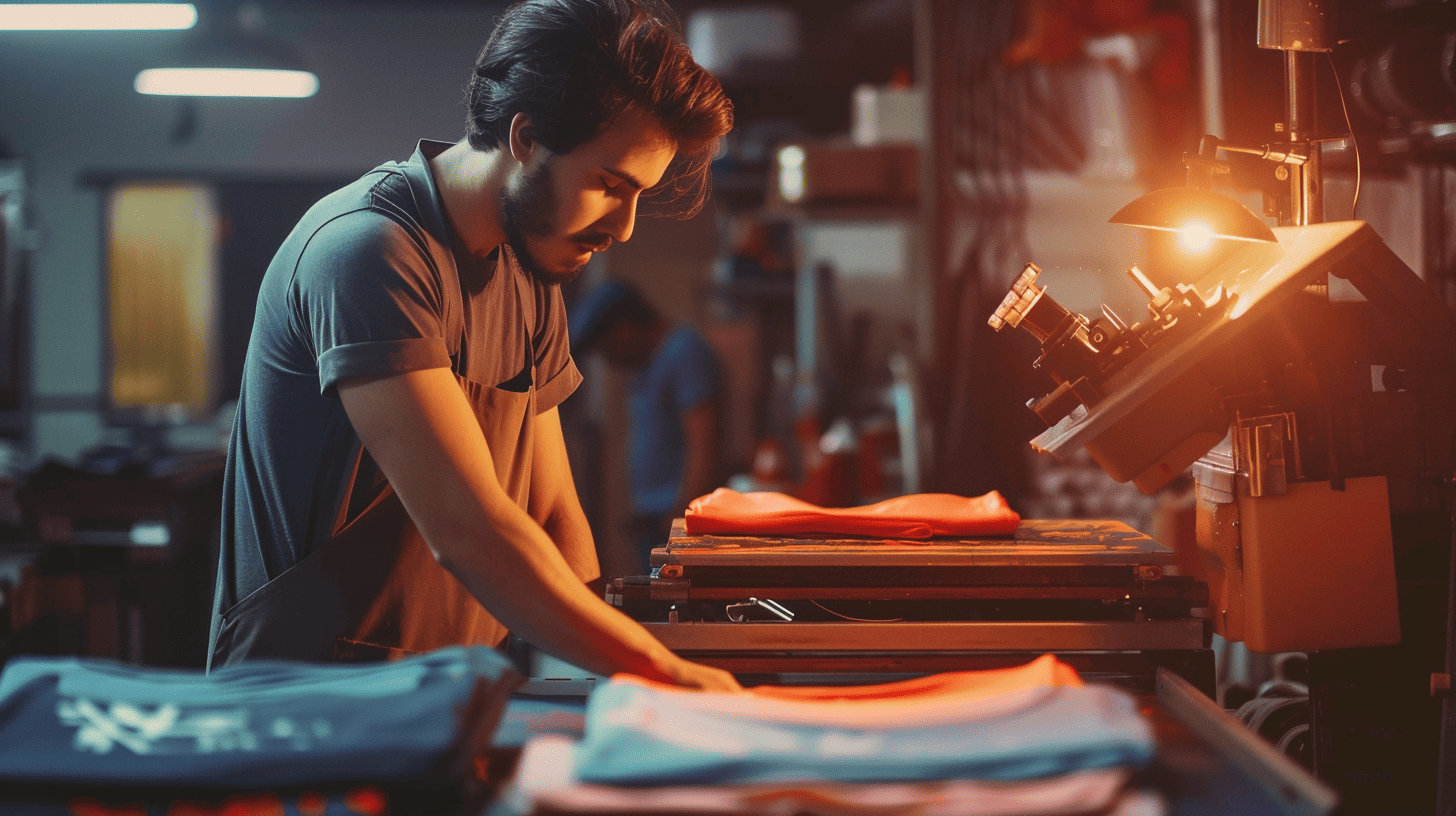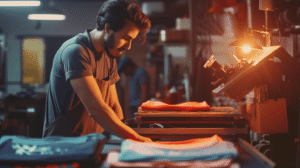Why Opaque Black Density Matters for Professional Screen Printing
Your screen prints lack sharp detail and have fuzzy edges. This leads to wasted materials[^1] and rejected jobs, costing you time and money.
Opaque black density is crucial because it completely blocks UV light during the screen exposure process. A truly dense black creates an ultra-sharp stencil with clean lines, preventing defects and ensuring a professional-quality final print every single time.

As someone who works with coated materials every day, I've seen countless printers struggle with this exact issue. They have the best equipment and the best designs, but the final print is flawed. The problem often comes down to one simple, overlooked detail: the black ink on their film positive isn't truly black. Let's explore why this matters so much.
How Can Weak Black Density Ruin Your Stencils?
You find tiny, unwanted dots or blurry lines in your final prints. This forces you to do tedious touch-ups or restart the entire job.
Weak black density allows UV light to leak through the film, partially hardening the screen emulsion where it should stay soft. This causes pinholes and fuzzy edges, destroying the precision of your stencil and leading to imperfect prints.

The entire screen printing process relies on a simple principle: light hardens the emulsion, and the unhardened parts wash away to create your stencil. Your positive film acts as a mask. The clear parts let light through, and the black parts are supposed to block it completely.
When the black ink isn't fully opaque, tiny amounts of UV light can pass through. This "light contamination" is a disaster for your stencil. It means the emulsion under your design doesn't wash out cleanly. Instead of a sharp, defined edge, you get a soft, jagged one. It also causes pinholes, which are tiny specks of hardened emulsion in your open design area.
I once visited a client who couldn't figure out why his prints were so "noisy." We held his film positive up to a light, and it was immediately clear. You could see the light right through the black areas. After switching to a high-density film, his problems disappeared overnight.
High Density vs. Low Density
| Feature | High Opaque Density | Low Opaque Density |
|---|---|---|
| Light Blocking | Complete block | Partial leak |
| Stencil Edges | Razor-sharp and clean | Soft and blurry |
| Pinholes | Very rare | Common issue |
| Washout Process | Fast and easy | Difficult, details lost |
Why is Consistent Density Key for Professional Printing?
Your prints look great one day and mediocre the next. This inconsistency makes it impossible to guarantee quality for your clients on repeat orders.
Consistent density ensures every stencil you create is a perfect clone of the last. This reliability is essential for multi-color jobs that need precise alignment and for repeat orders, guaranteeing every print meets the same professional standard.

Imagine you have an order for 500 t-shirts with a two-color logo. The first screen you make is perfect. But when you make a second screen for the next color, the black density on the film is slightly weaker. This causes the stencil to expose differently, and now the two colors won't line up perfectly. This is a registration nightmare.
Consistency is not a luxury in professional printing; it is a necessity. At SeyFilm, our advanced coating technology is designed to produce the same flawless result every time. The coating ensures that the ink sits on the film in a uniform, dense layer, without any variation.
This means you can create multiple screens for a large job, or re-run a job from six months ago, and have complete confidence that the results will be identical.
A client who specializes in high-end art posters told me this was the main reason he switched to our film. He said, "I can't afford any variation. My reputation depends on every single print being perfect." That level of reliability only comes from consistently high opaque black density.
Can High-Density Film Actually Save You Money?
You feel like you're constantly wasting materials. Failed prints and stencil remakes are eating into your profits and slowing down your entire shop.
Yes, it absolutely saves you money. High-density film prevents the most common exposure errors, which dramatically cuts down on wasted film, ink, and screen emulsion[^2]. You spend less time troubleshooting and more time printing profitable jobs.

Many people focus only on the upfront cost of materials, but the real costs in a print shop are waste and time.
Let's break down the cost of just one failed stencil caused by a low-density film:
- Wasted Film: The cost of the positive film sheet.
- Wasted Emulsion: The cost of the emulsion washed down the drain.
- Wasted Labor: The employee's time to repeat the whole process.
- Production Delays: The time your press is sitting idle.
A good film costs a little more upfront but pays for itself almost immediately by preventing these expensive failures.
I worked with a shop owner to track his expenses. He discovered that about 15% of his screen-making costs were due to remakes from bad exposures. By investing in a high-quality, high-density positive film, he nearly eliminated those remakes.
Conclusion
High opaque black density is not a minor detail. It is the foundation for sharp, consistent, and cost-effective screen printing—ensuring you deliver professional results[^3] on every single job.
References:
- Learn effective methods to reduce material waste and increase profitability in your shop.
- Gain insights into screen emulsion and its role in the screen printing process.
- Explore tips and techniques to ensure your screen printing delivers pro

